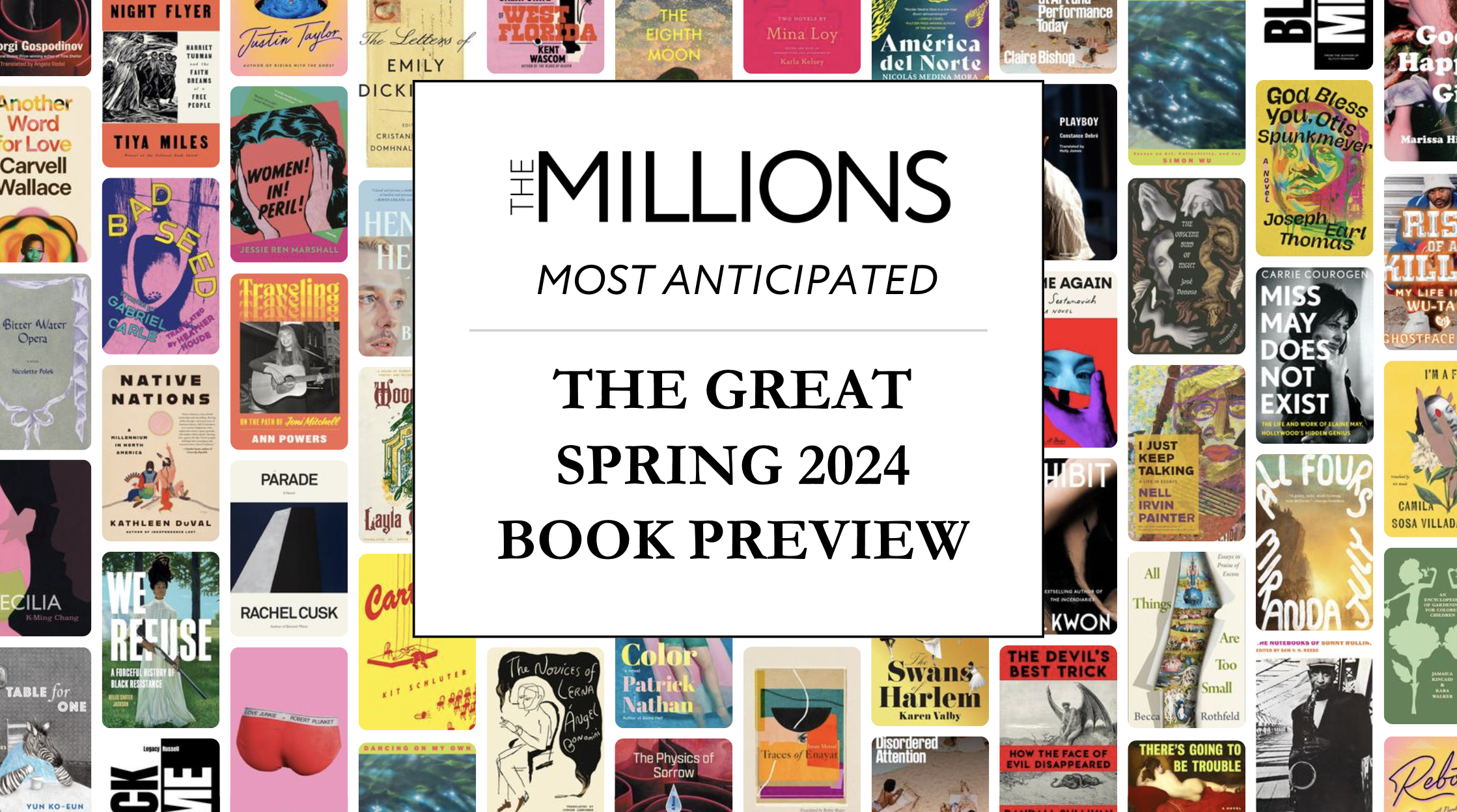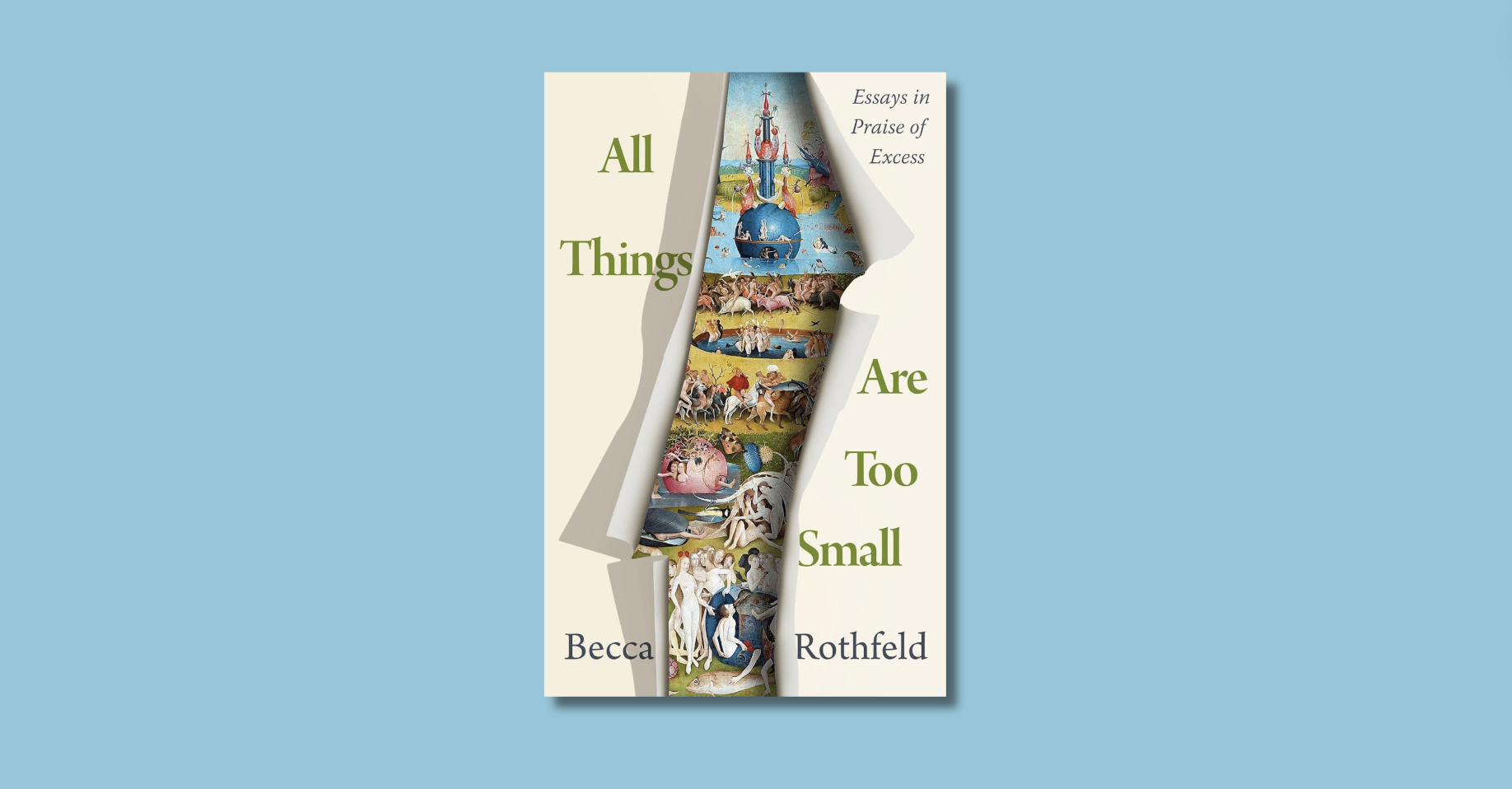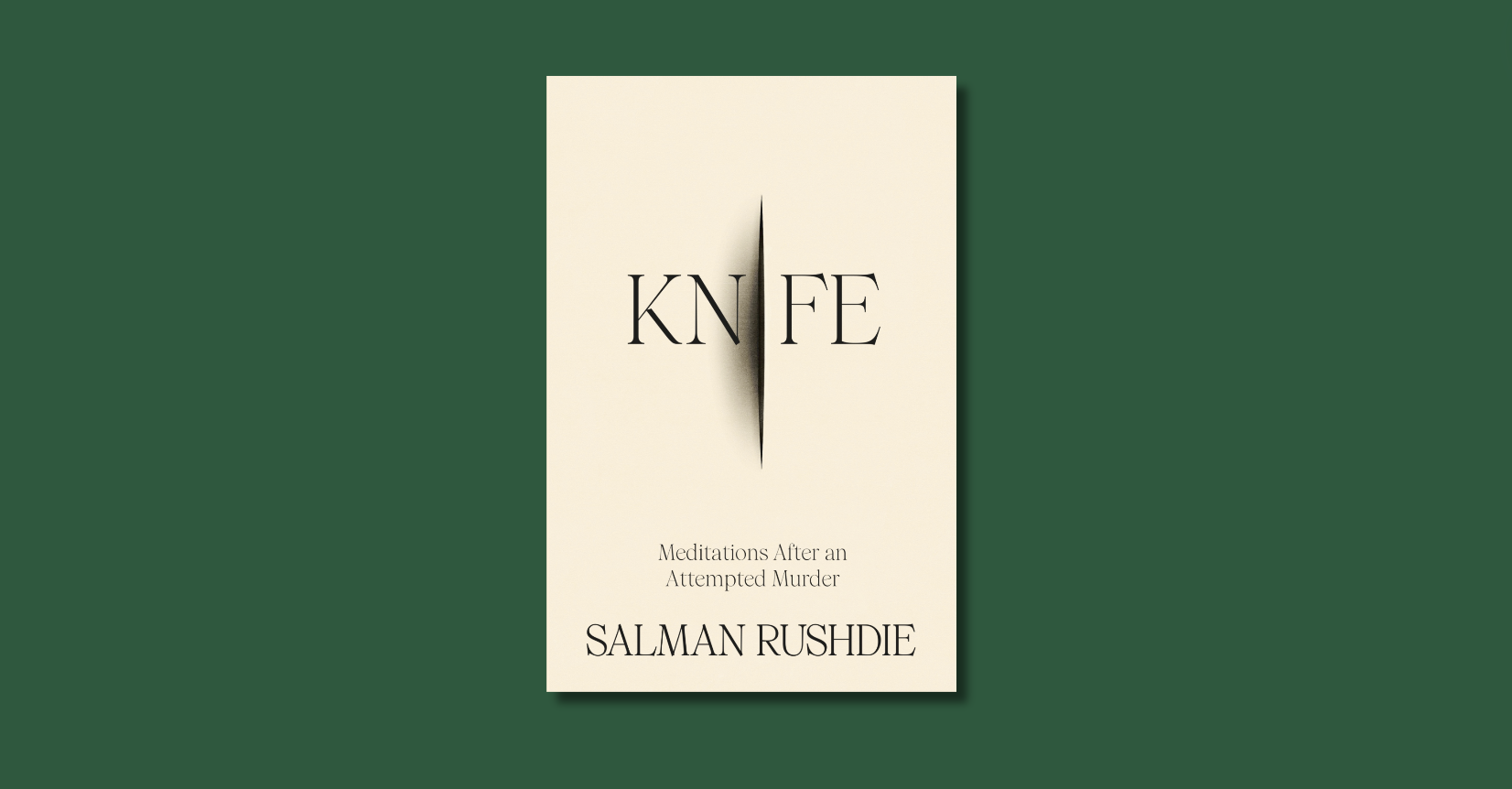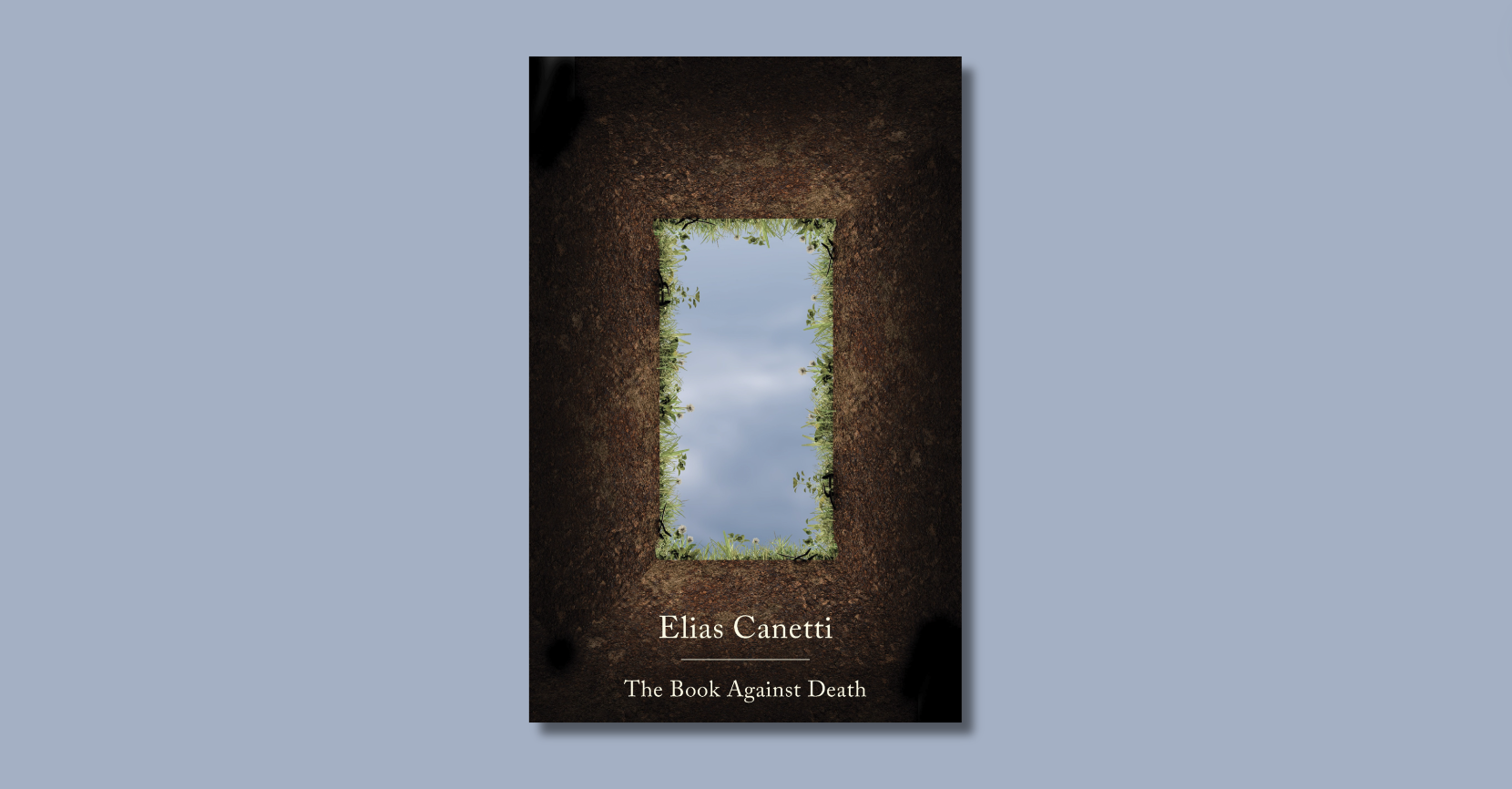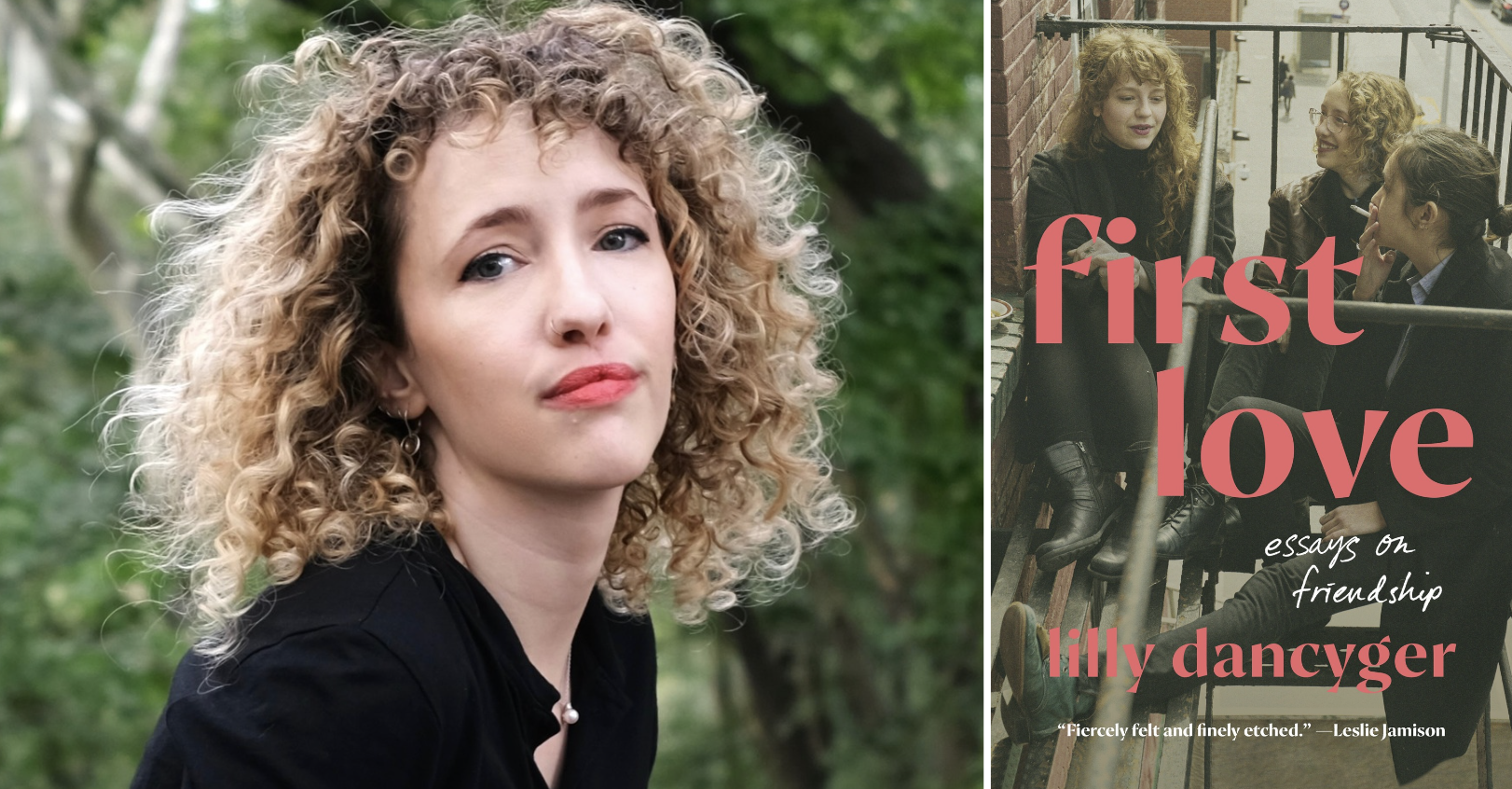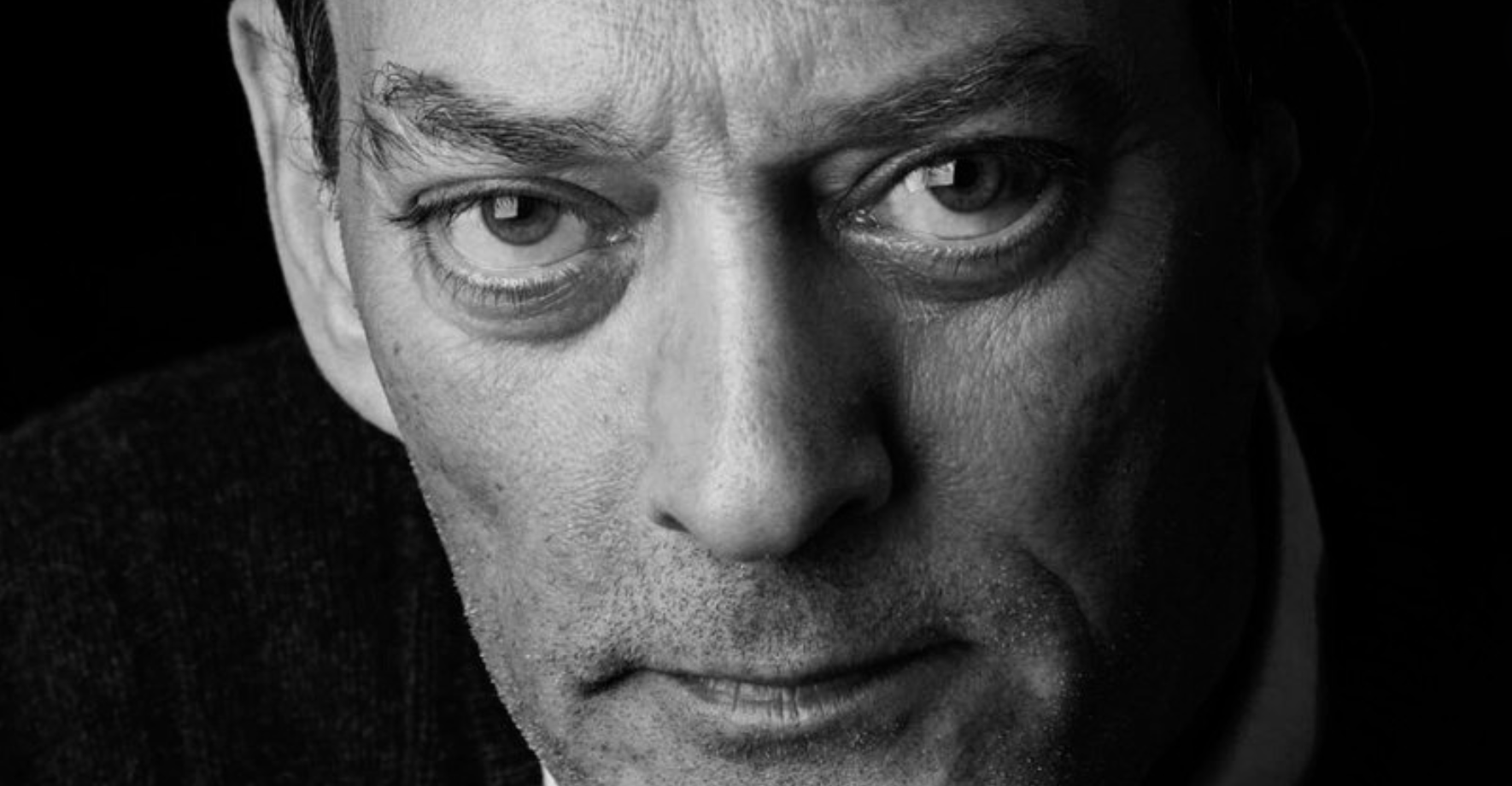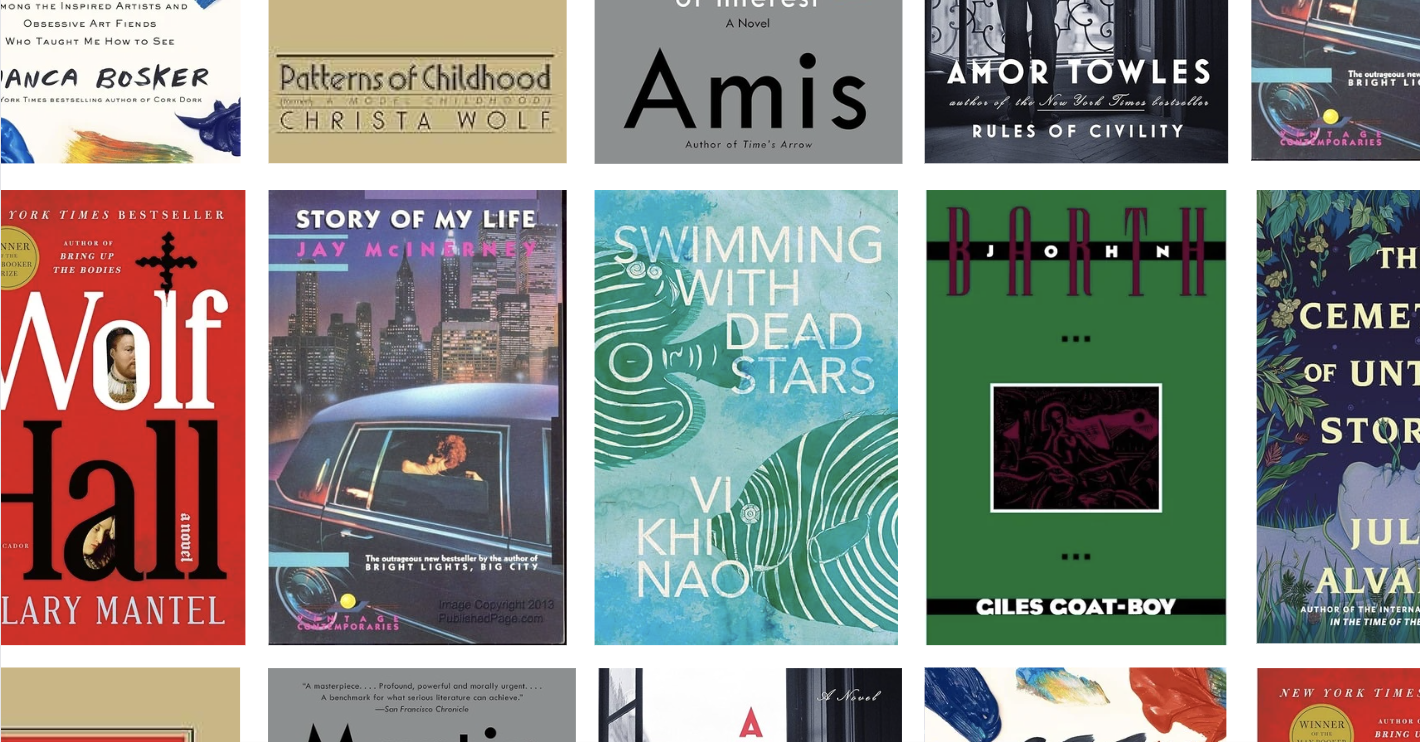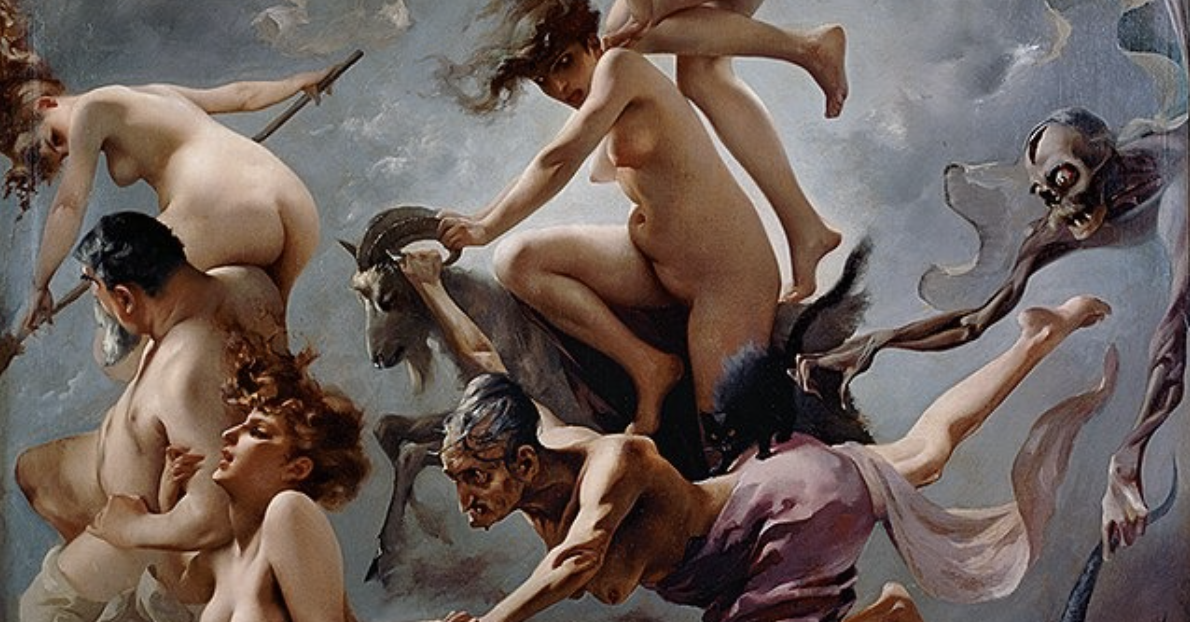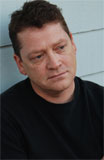
 Dan Chaon’s most recent novel, Await Your Reply, is a masterful tale of identity and how it’s made, stolen, and remade. The book, with its three interlocking stories, and locales as disparate as Las Vegas, Nebraska, and the Arctic, is intensely readable, but as Janet Maslin of The New York Times points out, “…the real pleasure in reading Mr. Chaon is less in finding out where he’s headed than in savoring what he accomplishes along the way.” Chaon is also the author of the novel, You Remind Me of Me, and two short story collections, Fitting Ends, and Among the Missing, which was nominated for the National Book Award. He was my creative writing teacher at Oberlin College, where he is the Irvin E. Houck Associate Professor of the Humanities.
Dan Chaon’s most recent novel, Await Your Reply, is a masterful tale of identity and how it’s made, stolen, and remade. The book, with its three interlocking stories, and locales as disparate as Las Vegas, Nebraska, and the Arctic, is intensely readable, but as Janet Maslin of The New York Times points out, “…the real pleasure in reading Mr. Chaon is less in finding out where he’s headed than in savoring what he accomplishes along the way.” Chaon is also the author of the novel, You Remind Me of Me, and two short story collections, Fitting Ends, and Among the Missing, which was nominated for the National Book Award. He was my creative writing teacher at Oberlin College, where he is the Irvin E. Houck Associate Professor of the Humanities.
The Millions: What really struck me about this book was how realistic and specific your characters felt, even as some of them dissolved and became nothing more than a name, a wardrobe, a series of gestures and ways of speaking. At the same time, though, other characters remained real—and, this isn’t exactly the right word—pure. How did you go about creating the different characters for this novel? How important was it that they all be believable, and what does that mean for this kind of book?
Dan Chaon: The book was written in little pieces, almost like a series of short-short stories in the beginning. When I started, I didn’t know anything but little glimmers—scenes—that eventually began to fit together. In general I don’t plan out my characters in advance. Mostly, I begin with images, moments—a severed hand in an ice bucket, a lighthouse on the prairie, a guy driving down the Dempster Highway toward the Arctic Ocean. Once I had the moment in my head, I began to circle out and try to understand the people who were involved. So I suspect that my experience of writing the book, and the discoveries that I made as I went along, are not so different from the readers’ experience. The characters all started out as “real” to me—I was getting to know them as I went along, the same way you get to know friends over time–and I was as shocked as anyone when some of them turned out to be fakes. You say that some of the characters “remained real—and this isn’t exactly the right word—pure,” –but I actually think this is exactly the right coinage. Pure. I really like that word. That’s one of the issues that I was thinking of when I was writing. What is a “real” self? What is a “pure” representation of character? Is it just a consistent set of behaviors? Is there something truly essential that makes you, you? I don’t think I came up with an answer, but it was fun to think about.
TM: In your acknowledgments, you write that Await Your Reply pays homage to various writers you’ve loved, from Ray Bradbury to Shirley Jackson to Peter Straub, among others. What was the extent of your “gestures and winks” toward their work? Is this your own playful, literary version of identity theft?


 DC: One of my early jobs when I was first out of undergrad was as a DJ. This was back in the late eighties, when the concepts of the “mash-up” and sampling were still in their infancy. But there was something about that concept that I really, really liked—the way the songs seemed to be having a conversation with one another, and by being combined actually transformed into something new. I’d like to think that there’s some of that going on here, too. Many of the “samples” are tucked into the imagery, like Easter eggs: for example, readers of Lovecraft’s At the Mountains of Madness and Poe’s Narrative of Arthur Gordon Pym will recognize those birds that are circling Miles in the Arctic, with their cry of “tekeli-li!”; people who have seen Takashi Miike’s movie, The Audition, will recognize that horrific piano wire in Chapter 2; people who have read Shirley Jackson’s The Haunting of Hill House will notice echoes of poor Eleanor Vance’s final thoughts… and—well, let’s just say that there are a few dozen of these throughout the book, which some people might enjoy finding themselves. But my intent wasn’t merely to create a bunch of cute in-jokes, either. To a larger extent, I was using these little touchstones to draw forth a particular texture and mood. For me, it was almost an invocation, a séance. That Ouija Board is in Jay’s house for a reason!
DC: One of my early jobs when I was first out of undergrad was as a DJ. This was back in the late eighties, when the concepts of the “mash-up” and sampling were still in their infancy. But there was something about that concept that I really, really liked—the way the songs seemed to be having a conversation with one another, and by being combined actually transformed into something new. I’d like to think that there’s some of that going on here, too. Many of the “samples” are tucked into the imagery, like Easter eggs: for example, readers of Lovecraft’s At the Mountains of Madness and Poe’s Narrative of Arthur Gordon Pym will recognize those birds that are circling Miles in the Arctic, with their cry of “tekeli-li!”; people who have seen Takashi Miike’s movie, The Audition, will recognize that horrific piano wire in Chapter 2; people who have read Shirley Jackson’s The Haunting of Hill House will notice echoes of poor Eleanor Vance’s final thoughts… and—well, let’s just say that there are a few dozen of these throughout the book, which some people might enjoy finding themselves. But my intent wasn’t merely to create a bunch of cute in-jokes, either. To a larger extent, I was using these little touchstones to draw forth a particular texture and mood. For me, it was almost an invocation, a séance. That Ouija Board is in Jay’s house for a reason!
As a writer, I feel like I’m always in conversation with the books that I’ve read. Occasionally, an interviewer will ask: “Who are you writing for? Who is your audience?” And in many ways the answer is that I’m writing for those authors I’ve loved, and the books I’ve loved. If you’re an avid reader, and a book gets under your skin, it can affect you as intensely as a real human relationship, it lingers with you for your whole life, and there is always this desire to re-experience that amazing sense of connection you get from “your books.” I understand completely why people want to write fan fiction. To me, I guess, all fiction is fan fiction at a certain level, just as it always has an element of identity theft.
TM: Do you see your novel as a kind of Nabokovian puzzle, to be unwrapped and unlocked by discerning readers of the future? How far does the rabbit hole go?
 DC: As much as I’m flattered by the term “Nabokovian,” I’m not sure that I’m capable of that level of gamesmanship. I’m sure that a literary critic could footnote the hell out of the book, but I suspect that a great number of the references she’d find here would be unintentional, or accidental, or drawn unconsciously from the cultural ether. A couple of years ago, I wrote the Afterward for the Signet Classic edition of Robert Louis Stevenson’s Dr. Jekyll and Mr. Hyde, and one of the things that struck me, re-reading that novel for the first time in many years, was how much of my recollection of the book was simply wrong. Major scenes that I remembered vividly simply weren’t there in the text. In fact, as it turned out, my memory of Dr. Jekyll had been so radically infected by the enormous number of other representations that were floating around in the culture—movies and comics and parodies and so forth—that it was difficult to read the “real” version without filling in aspects from the version I’d imagined, the version that I’d pieced together out of a vast array of cultural detritus. None of which had existed when the actual book was written. I hope that something similar may happen to readers of Await Your Reply, and that in this way the “rabbit hole” goes on into Fibonacci-like infinity. I set out to draw on some of the archetypal plots that I had always found most compelling—the Bluebeard story, the evil twin story, the mythology of shapeshifters, legends of ghosts and haunted places and fruitless quests into the wastelands—all of which, of course, were viral memes for centuries before the internet existed. I suspect that the reader will be reminded of a whole set of references and touchstones as they read—but that their footnotes would be idiosyncratic, a kind of private, Kinbote-like appendix for each individual reader.
DC: As much as I’m flattered by the term “Nabokovian,” I’m not sure that I’m capable of that level of gamesmanship. I’m sure that a literary critic could footnote the hell out of the book, but I suspect that a great number of the references she’d find here would be unintentional, or accidental, or drawn unconsciously from the cultural ether. A couple of years ago, I wrote the Afterward for the Signet Classic edition of Robert Louis Stevenson’s Dr. Jekyll and Mr. Hyde, and one of the things that struck me, re-reading that novel for the first time in many years, was how much of my recollection of the book was simply wrong. Major scenes that I remembered vividly simply weren’t there in the text. In fact, as it turned out, my memory of Dr. Jekyll had been so radically infected by the enormous number of other representations that were floating around in the culture—movies and comics and parodies and so forth—that it was difficult to read the “real” version without filling in aspects from the version I’d imagined, the version that I’d pieced together out of a vast array of cultural detritus. None of which had existed when the actual book was written. I hope that something similar may happen to readers of Await Your Reply, and that in this way the “rabbit hole” goes on into Fibonacci-like infinity. I set out to draw on some of the archetypal plots that I had always found most compelling—the Bluebeard story, the evil twin story, the mythology of shapeshifters, legends of ghosts and haunted places and fruitless quests into the wastelands—all of which, of course, were viral memes for centuries before the internet existed. I suspect that the reader will be reminded of a whole set of references and touchstones as they read—but that their footnotes would be idiosyncratic, a kind of private, Kinbote-like appendix for each individual reader.
TM: This novel is ingeniously structured, with three narratives that eventually overlap and lock together. Part of the fun of reading it is figuring that puzzle out. How did you put together this little narrative machine? None of it feels accidental—but can that be?
DC: When I started out, I didn’t have any idea how the three threads were connected. I just knew that they were—somehow. The first hundred pages of the book took me about two years to write. I revised and revised, and fiddled around with the personalities of the characters, and added and deleted subplots and minor characters—basically trying to frame out the farmland that I was going to be working with, cutting brush and taking rocks out of the soil and so forth. The second hundred pages took about nine months. This was when I began to use cliff-hangers at the end of each chapter, leaving each thread with an unanswered question that I had to figure out, and that pushed things forward for me more quickly. At this point, I was showing the book chapter by chapter to my editor, Anika Streitfeld, and to my wife, the writer Sheila Schwartz. They would each give me a little feedback and I’d float various plot concepts—which Anika or Sheila or both of them would frequently, kindly, shoot down, or talk me through. The last hundred pages was written in a little less than two months, but it really wasn’t until the final few chapters that I truly had everything figured out. The last bit of plot clicked into place the way a difficult math problem sometimes does. Bing! Suddenly it seems so obvious! And I remember e-mailing Anika at about four in the morning. “Does this sound crazy???” I had to go back and do some adjustment and revision—but it was actually quite surprising to me to discover how much of the plot was already there, embedded in the narrative without my noticing. It didn’t actually require a lot of rewriting. My wife Sheila died of cancer not long after I’d finished the final revisions, and it’s both difficult and comforting now to look at this book, since there is so much of her in it, chapter by chapter: her advice and thoughts and spirit. She wrote in pencil on the last page of the last chapter: “You did it, honey!” But really we did it together.
TM: As Await Your Reply progresses, it hearkens more and more to an old-fashioned thriller or horror tale, with its level of suspense, its secrets and plot revelations, and its pervading sense of unease. This, for me, felt simultaneously like a departure and continuation from your earlier work, if that makes any sense. What say you?
 DC: I’ve been deeply influenced by two strains of North American fiction: first, by the realistic regionalism of writers like Alice Munro, Raymond Carver, Sherwood Anderson, and so forth; and secondly, by writers of dark fantasy like Peter Straub, Shirley Jackson, and Ray Bradbury, etc. I’ve tended to be categorized more with the former group, the regional realists, but I think that you could make a good case to classify my work with the latter as well. My short story collection, Among the Missing, was strongly influenced by the tradition of ghostly and supernatural tales, and my first novel, You Remind Me of Me, was drawing very heavily from tales of psychological suspense and Kafkaesque otherworldliness—not intended to be straightforward melodrama, though I think it was often taken as such. I learned a lot about novel-writing from You Remind Me of Me—the effects that I wanted, and those that I didn’t—and I deliberately wanted to go back to the multiple narrative, round-robin style of storytelling, and see if I could build on what I had figured out. Around the time I was finishing You Remind Me of Me, I also happened to write a story for McSweeney’s Mammoth Treasury of Thrilling Tales, edited by Michael Chabon. Chabon’s project was to combine so-called literary writing with pulp and genre storytelling elements, and I was very much inspired by what he had to say. I felt like the story I wrote, “The Bees,” was a breakthrough for me, and I learned a lot from writers like Karen Joy Fowler, Kelly Link, George Saunders, Arthur Phillips, Kevin Brockmeier—and many others—who were doing interesting work with genre-bending. I have to say, though, that perhaps the biggest cultural influences on the novel were my teenaged sons, Philip and Paul, and the books and movies and TV shows that they loved and which permeated our household—Garth Nix’s Abhorsen trilogy of books, and Philip Pullman’s His Dark Materials, the TV show “Lost,” the films Fight Club and Eternal Sunshine of the Spotless Mind, all the various good, smart stuff which one or both of my kids were obsessed with…
DC: I’ve been deeply influenced by two strains of North American fiction: first, by the realistic regionalism of writers like Alice Munro, Raymond Carver, Sherwood Anderson, and so forth; and secondly, by writers of dark fantasy like Peter Straub, Shirley Jackson, and Ray Bradbury, etc. I’ve tended to be categorized more with the former group, the regional realists, but I think that you could make a good case to classify my work with the latter as well. My short story collection, Among the Missing, was strongly influenced by the tradition of ghostly and supernatural tales, and my first novel, You Remind Me of Me, was drawing very heavily from tales of psychological suspense and Kafkaesque otherworldliness—not intended to be straightforward melodrama, though I think it was often taken as such. I learned a lot about novel-writing from You Remind Me of Me—the effects that I wanted, and those that I didn’t—and I deliberately wanted to go back to the multiple narrative, round-robin style of storytelling, and see if I could build on what I had figured out. Around the time I was finishing You Remind Me of Me, I also happened to write a story for McSweeney’s Mammoth Treasury of Thrilling Tales, edited by Michael Chabon. Chabon’s project was to combine so-called literary writing with pulp and genre storytelling elements, and I was very much inspired by what he had to say. I felt like the story I wrote, “The Bees,” was a breakthrough for me, and I learned a lot from writers like Karen Joy Fowler, Kelly Link, George Saunders, Arthur Phillips, Kevin Brockmeier—and many others—who were doing interesting work with genre-bending. I have to say, though, that perhaps the biggest cultural influences on the novel were my teenaged sons, Philip and Paul, and the books and movies and TV shows that they loved and which permeated our household—Garth Nix’s Abhorsen trilogy of books, and Philip Pullman’s His Dark Materials, the TV show “Lost,” the films Fight Club and Eternal Sunshine of the Spotless Mind, all the various good, smart stuff which one or both of my kids were obsessed with…
TM: In a 2004 interview with Poets and Writers Magazine, you remarked: “I’ve written stories since I was a little kid. To me there’s something compelling about being a different person for a little while and trying out a different kind of life.” I couldn’t help but read Await Your Reply as partly a meditation on fiction writing and reading. In the book, when Ryan muses that identities are like shells that “you stepped into and that began to solidify over time… They began to take on a life of their own, developed substance,” I thought of my own creative process of inhabiting characters. And Ryan’s sadness after retiring an identity articulated so well that peculiar grief of finishing a manuscript, or a beloved book. Were these nods to the writing and reading life intentional? Furthermore, do you think fiction writing is somewhat criminal—is it a weird invasion of privacy, this theft and composite of various real lives? Do readers understand best the lure of identity theft, the chance to live another’s life for a while? And, when you spend a large part of your time making up stories and reading made up stories, where does real life begin and end? What makes some human beings real, and some fictional?
DC: Gee, Edan. You articulate things so well here that I barely have to answer! Yes to all of these. I think that as a teacher of creative writing, it’s inevitable that you think a lot about the creative process, and that you spend a lot of time trying to articulate how it works and why it is important, especially in a world that students face in which this kind of thinking isn’t taken seriously, when it’s seen as frivolous—or worse. One of the things that I talk about frequently with my students is the act of empathy—the act of trying to imagine yourself in the position of someone else—and the way this can be scary, and transgressive, and even dangerous. One of my assignments in my fiction class is to ask students to write from the point of view of someone radically different from themselves—to speak in the voice of a different gender or ethnicity or class, to try to think as far outside themselves as they can go, to try to inhabit that person—and for many of my students this feels perilous, even morally problematic.
I remember one time we had a discussion in class about a sensational news story. An insane woman had kidnapped a pregnant mother, and had killed the mother and performed a c-section and claimed the baby as her own. A truly horrifying tale. And we had been talking about it in class, and I asked: which character would you choose if you were writing a story? The pregnant mother or the insane woman who took the baby? At that point, a young woman spoke up, a sophomore. “My God!” she said. “The ghost of that dead woman is probably spitting on us as we sit here talking about this!” I think that was you, Edan, who was so appalled. I remember that it gave me pause: At what point does imagining, does the attempt to inhabit, become wrong? At what point does it become morally repugnant? I still think: never. But I understand that it’s fraught, that it’s compromised, that it’s suspect. That it’s an invasion that borders on—or crosses over into—the criminal. During the writing of this book, I followed the exploits of a number of trolls who used invented personas to invade and then (often hilariously) disrupt various solemn internet message boards. I read about a depressed teen who was goaded into suicide by a cruel classmate’s mother who was pretending to be the poor girl’s “boyfriend” on MySpace. I myself set up a dummy email address and briefly tried out various fake personas to see what would happen.
Where does real life begin and end? What makes some human beings real, and some fictional? I don’t know the answer. For better or worse, the answers to these questions seem to be changing all the time, and maybe there is no true answer.
TM: There’s an incredibly eerie and memorable second-person chapter at the end of Part One, where the narrator describes “your” identity being stolen, which, “Isn’t necessarily you, of course…you are aware of your life as a continuous thread, a dependable unfolding story of yourself that you are telling yourself.” This chapter has the great power of planting paranoia in the reader’s mind, and forces her to question her own identity and notions of self. As I kept reading, though, I found myself feeling paranoid about everything in the book—pretty soon I couldn’t trust anyone! Um, Dan? How in the hell did you do this?
DC: This chapter emerged from a late night free-write, which wasn’t originally intended to be anything but a journal entry. I was at a point when I needed to try to explain to myself what the book was about, and this was one of the few chapters (the final chapter, Chapter 26, is the other) which came out in one draft, with very little revision. It felt like an inner voice that was speaking to me—a very eerie feeling for me as well.
TM: About the aforementioned chapter: why the second person? It’s interesting, because while it’s about identity theft, it’s not taking away my identity, but, rather, giving me a different one. In the text, I’m pulling off a snowy interstate—“And you wipe off the snow in your hair”—when in fact this reader lives in Los Angeles! What went into this particular narrative choice?
DC: The narrative movement of this chapter was weird for me. Originally, the narrator felt like me, Dan Chaon, the author—but then it moved into a more chilly and abstract omniscience, as if a little spark of myself had disconnected and was free-floating through the world, out-of-the-body travel, and then I found myself hovering over a stranger and entering into his consciousness. Becoming part of the scene, and taking on his life story and personality. I realize now that I was trying to model the process of transference—to describe in shorthand the way imaginative empathy works. “You” are not in Los Angeles any longer. You have become that melancholy middle-aged guy pumping gas in upstate New York.
There is a poem by my friend Liz Rosenberg called “The Accident,” which I think about a lot. In the poem, a woman who is driving down the interstate observes the death of a motorcyclist from a distance, and there is an incredibly beautiful use of second person that I have always admired. “You are still you, but changing fast,” says the narrator of Liz Rosenberg’s poem, and she is both talking to the dying motorcycle guy and to herself.
TM: Has teaching at Oberlin influenced you as a writer? How do you manage to give students a sense of artistic freedom, while also offering them straightforward advice on technique and form?
DC: I love teaching, and I particularly like that moment when a student begins to discover the subject matter and voice that makes them unique. That’s a real high for me and it’s what keeps me coming back, semester after semester. It’s such a pleasure to be around people who care passionately about books and writing and who have singular perspectives about the world, which is what I find almost across the board with Oberlin students. I do find that I learn a lot from students, too. The thing about teaching fiction is that there isn’t one answer to a problem—there’s no rulebook or easy fix. I learn a lot about my own process from helping students find solutions to the various issues that emerge when you’re working through a draft. Not to get all new-agey, but there’s a lot of good energy that comes out of it.
TM: Have you noticed any popular themes or concepts in this current era of undergraduate writers?
DC: I notice a lot more post-apocalyptic scenarios these days, and I’m aware that as a generation this new group is pretty scared and pessimistic about the future they’re being left with. In general, there’s less interest in straightforward realism than there used to be. It remains very difficult to get anyone under 21 interested in Alice Munro or William Trevor, but I guess that’s as it should be. It’s hard, at my students’ age, to be sympathetic with the very middle-aged concerns of those two greats. All in good time, right?
TM: Because this is a book site, and because I know for a fact that you are a voracious, insane reader, I must ask you: What was the last great book you read?
DC: Lies Will Take You Somewhere, by my wife, Sheila Schwartz—and not just because we were married, either. I learned nearly everything I know about writing from her, and it’s a flat-out brilliant book: dark, funny, and strange in all the right ways.
